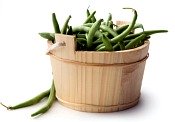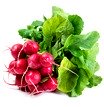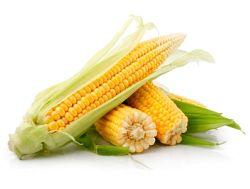Green Beans Nutrition
Wondering a bit about green beans nutrition? Good news: besides being a kick to look
at—as when they show up in yellow and
purple—these dietary mainstays pack a notable punch. For starters, green beans have carotenoids: notably, lutein and beta carotene. Food-based lutein combats cataracts and macular
degeneration and may also inhibit
clogging of the carotid arteries. So, green beans are clearly more than just a pretty face.

They also contain several flavonoids, including quercetin, which some research indicates
is a cancer-fighter. A potent anti-oxidant, when combined with bromelain it can often be quite a
help during allergy season. In short, the modest green bean is far closer to Superman than to
Clark Kent—all the more reason to cook them with care.
And there’s more: for example, a single cup of green beans contains 832 international units of Vitamin A, 373 miligrams of potassium, and 31 miligrams of magnesium. Interestingly enough, that same cup of beans also yields 57 miligrams of calcium and just over 2 grams of protein. Looking better and better, right?
Like the tomato, the green bean boasts New World roots, originating in Peru and then spreading throughout Central and South America. From there it crossed the various seas with both Conquistadors and early traders, now delighting diners and munchers worldwide. In fact, it's reputed to be second in popularity only to the tomato in many countries. Interesting, no?
Preserving Green Beans' Nutrition and Color

Have you watched people begin cooking green beans by tossing them into boiling water...but
then ignore them for about 20 minutes? And during that time, as you
internally weep, those crisp greenies turn into something only a mother
could love.
Before you know it, they're on the table, and you're
supposed to somehow choke them down. So, do you mentally cringe and hide your eyes as this little girl is doing?
Lots of us do—not
because we actually dislike green beans, but because we can't stand
them overcooked. As children, though, many of us may not have understood that distinction...which could have led us to the (possibly lifelong) idea that we hate green beans. Too bad,
because bright green and crunchy beans can be a joy to eat in all
manner of ways.
Plus, as we've seen, they're absolutely packed with great stuff IF they're not overcooked. On a different page, I've suggested some simple ways to cook green beans that, with a little testing, should preserve their taste, color, and nutrition. Click here to visit that page. But before you go, perhaps check out the peanut sauce just below if you're going to use some of your beans as snacks.
Green Beans as an Appetizer
Besides their nutritional benefits, these rock stars make great dippers. When you need a little boost, try them with this peanut sauce. If even that seems
like too much hassle after a busy day, dip your greenies into a little
prepared hummus instead.
Or make a low-cal but nutritious
sauce with a little yogurt or yogurt cheese, to which you add some mild
salsa and/or chopped green chilis and some ground cumin. Tastes great
but also doesn’t pack a big load of calories and fat.
Smacky and Simple(!) Peanut Sauce
- ½ cup peanut butter
- 2-3 tablespoons tamari or reduced-sodium soy sauce
- ¼ cup mild salsa (or perhaps experiment with part salsa and part V-8 juice)
- Water, wine, or veggie broth as needed
Combine the peanut butter, tamari, and salsa
in a small bowl, mixing with a fork or small wire whisk until blended.
As you whisk, add only enough liquid to create a suitable consistency
for dipping. Serve at room temperature.
Don't like peanut butter? Maybe one of these dips will suit you better!
Thanks for visiting Green Beans Nutrition! To see what else we offer here, just check the site map.
Please understand that the material at this site is NOT medical advice, as I am neither doctor nor nutritionist. What I am is merely someone who's lived successfully on a vegetarian diet for many decades...and I transitioned from omnivore to vegetarian gradually. Do check with your doctor, though, if you're considering big changes to your own diet. Also, be sure to find a dependable source of Vitamin B12.
Living Vegetarian the Easy Way
Copyright 2010-2024. Lynda Edwards. All rights reserved.



